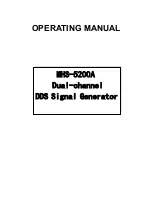
Studio Line-up Levels and Headroom
The studio engineer is primarily concerned with calibrating the equipment to provide the
required input level for proper operation of each device, and so that all devices operate with
the same input and output levels. This facilitates patching devices in and out without
recalibration. For line-up, the studio engineer uses a calibration tone at a studio standard
level, commonly called line-up level, reference level, or operating level.
Metering at the studio is by a VU meter or PPM (Peak Program Meter). As discussed above,
the VU or PPM indication lags the true peak level. Most modern studio audio devices have
a clipping level of no less than +21dBu, and often +24dBu or more. So the studio
standardizes on a maximum program indication on the meter that is lower than the clipping
level, so that peaks that the meter doesn’t indicate will not be clipped. Line-up level is
usually at this same maximum meter indication.
In facilities that use VU meters, this level is usually at 0VU, which corresponds to the studio
standard level, typ4 or +8dBu. For facilities using +4dBu standard level, instantane-
ous peaks can reach +18dBu or higher (particularly if the operator overdrives the console or
desk). Older facilities with +8dBu standard level and equipment that clips at +18 or +21dBu
will experience noticeable clipping on some program material.
In facilities that use the BBC-standard PPM, maximum program level is usually PPM4 for
music, PPM6 for speech. Line-up level is usually PPM4, which corresponds to +4dBu.
Instantaneous peaks will reach +17dBu or more on voice.
In facilities that use PPMs that indicate level directly in dBu, maximum program and line-up
level is often +6dBu. Instantaneous peaks will reach +11dBu or more.
Transmission Levels
The transmission engineer is primarily concerned with the peak level of a program to
prevent overloading or over-modulation of the transmission system. This peak overload
level is defined differently, system to system. In FM modulation (FM/VHF radio and
television broadcast, microwave or analog satellite links), it is the maximum-permitted RF
carrier frequency deviation. In AM modulation, it is negative carrier pinch-off. In analog
telephone/post/PTT transmission, it is the level above which serious crosstalk into other
channels occurs, or the level at which the amplifiers in the channel overload. In digital, it is
the largest possible digital word.
For metering, the transmission engineer uses an oscilloscope, absolute peak-sensing meter,
calibrated peak-sensing LED indicator, or a modulation meter. A modulation meter usually
has two components — a semi-peak reading meter (like a PPM), and a peak-indicating light
which is calibrated to turn on whenever the instantaneous peak modulation exceeds the
over-modulation threshold.
1-18
INTRODUCTION
OPTIMOD-FM 8200





































